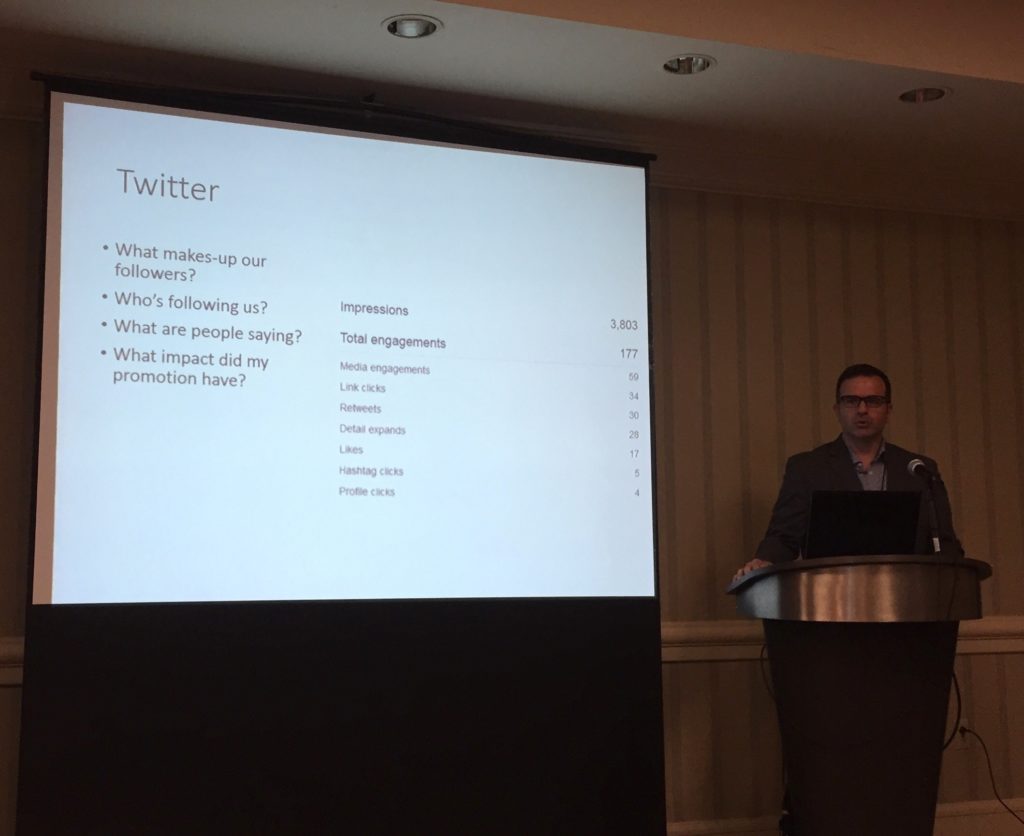Moderator:
Rajashree Ranganathan
Senior Manager, Journals Production
American Society of Civil Engineers
Washington, DC
Speakers:
Shaun Halloran
Operations Manager
Environmental Health Perspectives
Durham, North Carolina
Glenn Landis
Editorial Director, Blood Journals
American Society of Hematology
Washington, DC
Jasmine Wallace
Peer Review Specialist
American Society for Microbiology
Washington, DC
Reporter:
Carolyn deCourt
Managing Editor, Marketing Assistant
J&J Editorial
Cary, North Carolina
“The publishing world is changing so quickly that it’s easy to overlook the essential, foundational elements. It’s important to have a basic understanding of the entire process if you want to make good decisions about marketing your content.” – Shaun Halloran
A large amount of information is generated throughout the life of a paper, from submission through publication. However, being published is not the end of the journey in the current publishing world. A range of factors such as metadata and social-media information play key roles in the ability to search for and discover a paper. Rajashree Ranganathan organized this session to provide an overview of these factors and to demonstrate the collection, processing, and application of relevant information.
Shaun Halloran, Operations Manager at Environmental Health Perspectives, explained how to use production tools to gather, track, and publish content and metadata. Clearly, there is a lot of information collected during the editorial process, but there is more to data collection. Halloran stated, “I focused my session on production, and tried to educate the attendees on best practices for getting good metadata into their publications, and handing that off to the platform and marketing teams to track impact and interest.” Data organization that happens during production provides an opportunity to capture data that is only applicable to accepted papers. One major tool Halloran highlighted, eXtensible Markup Language (XML), generates and tracks metadata inherently. XML is customizable and easily translated to other formats, and there are many types from which to choose.
He briefly mentioned cloud-based author proofing, which maintains the entire proofing system in an electronic and trackable format, before discussing continuous publication. Though good metadata can be maintained without continuous publication, there are many benefits to this publication model, such as keeping the focus on the article instead of the issue, and tracking citations before the issue is assigned while still including overall issue information.
Glenn Landis, Editorial Director at the American Society of Hematology, described how to measure success with statistics. There are many ways to measure impact, from citations, online usage, blog posts, and media coverage, to discussion boards, Facebook, Wikipedia, and LinkedIn. Landis uses Web of Science, Journal Citation Report, Altmetric Explorer, Twitter, HighWire Vizors, surveys, and sales to measure impact Web of Science and HighWire Vizors are great tools, showing which subjects are most popular based on search filters, which articles have the most citations, and more. Altmetric Explorer also captures impact metrics but from a marketing standpoint; for example, media coverage on Facebook of other articles in the same discipline and from past months. Twitter has similar statistics, including how many times a tweet has been liked and retweeted and how many times a link has been opened.

Surveys and sales statistics can also be useful instruments to gauge success. Landis shared some tips to consider before you begin collecting: specify, know your audience, decide on frequency, set goals, and save all your progress as you go.
Jasmine Wallace, Peer Review Specialist at the American Society for Microbiology, discussed information to be collected during the editorial process. She outlined and organized how best to collect information and how to make the process as streamlined and easy as possible. It is common to collect basic information at submission such as title, authors, institutions, email addresses, and keywords. There is also additional material that can be collected and used to measure long-term success of the manuscript, such as ORCIDs, social media information, funder information, and preprint information. Once you decide on which information to collect, it is important to determine at what point in the process you plan to collect it.
For the collection of information to be user friendly, the implementation and user interfaces must be are clear and up to date. Updating letter templates, how-to documents, help and frequently asked question (FAQ) pages, instructions to authors, and policies is essential to ensure that users provide the information you are requesting. Wallace explained the need to reevaluate existing features along with the latest updates to make sure your platform is easily navigable. She ended by suggesting monitoring your progress and effectiveness through ORCID, social media, funder information, and preprints.
When deciding whether and how to collect, use, or measure success through submission information, Halloran, Landis, and Wallace provided some excellent tools and tips to successfully navigate the process.
